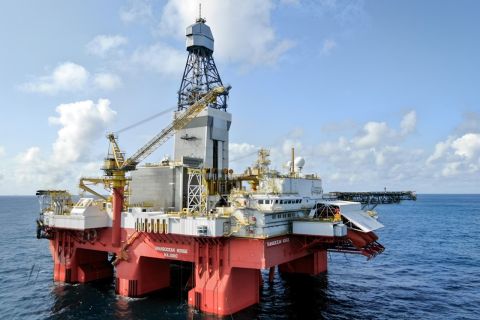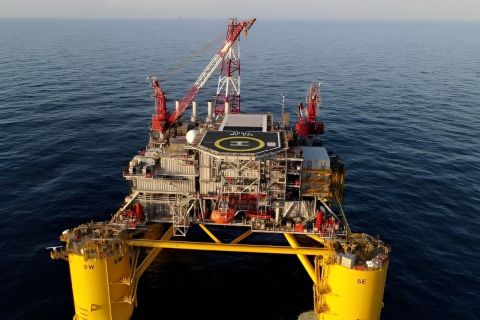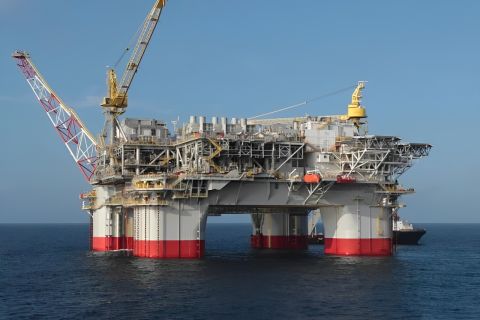The MLPs (master limited partnerships) are having a major impact on the upstream investment environment today, according to Don Wolf, president and chief executive of Denver-based Aspect Energy and CEO of Quantum Resources Management.
Wolf addressed some 500 attendees at the sixth annual A&D Strategies and Opportunities conference in Dallas recently, presented by Oil and Gas Investor and A&D Watch. Quantum, which has built a portfolio of some $500 million of assets in its first year, took an upstream MLP plan on a road show recently but has withdrawn it for now while capital markets settle.
"The door isn't closed," Wolf said. But, when the markets will settle and refocus on upstream MLPs is "anyone's guess," he said.
He added that potential investors have "been a little concerned about premiums being paid for assets" by MLPs.
There may be some skepticism about upstream MLPs, in spite of their popularity, said Wil VanLoh, head of Houston private-equity provider Quantum Energy Partners, which arranged direct institutional investment in Quantum Resources Management.
"I think there is a lot of irrational exuberance around MLPs right now. MLPs can be a wonderful new way to apportion who owns assets, or they can be a trainwreck waiting to happen," VanLoh said.
MLPs trade on expectations of yield and growth, Wolf noted. "People don't really invest in the MLP for the 5% or 6% yield. They invest because it's yield plus growth. And certainly the track record over the past year has encouraged that thinking."
The upstream market for MLPs is still developing, he said. "A year ago, we had one. We now have six, and we have a lot in the queue. There is potentially a lot more growth in the upstream side. The other issue, of course, is you've got a depleting asset and how stable can it be?
"Our model is still under construction and needs to be improved," he said.
In the past 14 months, the upstream MLPs have made more than $10 billion of acquisitions. Their advantage of having a lower cost of capital was cited by Steve Pruett, president and chief financial officer of Legacy Reserves LP, Midland, Texas. Since the MLP went public earlier this year, it has made a series of acquisitions in the Permian Basin.
Upstream MLPs are buying packages with, on average, 81% proved developed producing (PDP) assets, while traditional C-Corp companies are buying 59% PDPs in theirs, according to Pruett. "From our perspective, a PDP barrel is worth more than a PUD barrel. Our peer group is pursuing PDPs that generate cash flow to fund our distributions. MLPs should have a low beta like a utility."
But deal flow may slow down some. "The general liquidity crisis has hit Legacy and some of our peers," Pruett said, "We don't know what our access to capital is now-will that tighten up? A sobering of the capital markets could lead to C-Corps not spinning out their assets to MLPs."
But other factors come into play as well, as MLPs try to sustain growth in assets, distributions and yield, at the same time.
The weighted average cost of capital for an upstream MLP can range from 10.4% to 10.5% with the cost of debt about half that. Incentive distribution rights (IDRs) raise the cost of capital once a company reaches its split, where more cash flow goes to the general partner.
The fad of MLPs may not last in the longer term, warned John Walker, chairman and chief executive of Houston-based EV Energy Partners LP, which also went public in 2006.
"The only way to grow an MLP is to make accretive acquisitions. We think any drilling in an MLP beyond keeping production flat will create a problem. Sustainability is very important. We should ask, does the manager have good success in the A&D market?"
Walker predicted that three to five years from now, about half the upstream MLPs formed or under way will not be in business.
Recommended Reading
E&P Highlights: Aug. 26, 2024
2024-08-26 - Here’s a roundup of the latest E&P headlines, with Ovintiv considering selling its Uinta assets and drilling operations beginning at the Anchois project offshore Morocco.
OMV Makes Gas Discovery in Norwegian Sea
2024-08-26 - OMV and partners Vår Energi and INPEX Idemitsu discovered gas located around 65 km southwest of the Aasta Hansteen field and 310 km off the Norwegian coast.
E&P Highlights: Sep. 2, 2024
2024-09-03 - Here's a roundup of the latest E&P headlines, with Valeura increasing production at their Nong Yao C development and Oceaneering securing several contracts in the U.K. North Sea.
Breakthroughs in the Energy Industry’s Contact Sport, Geophysics
2024-09-05 - At the 2024 IMAGE Conference, Shell’s Bill Langin showcased how industry advances in seismic technology has unlocked key areas in the Gulf of Mexico.
Chevron Boosts Oil, NatGas Recovery in Gulf of Mexico
2024-09-03 - Chevron’s Jack/St. Malo and Tahiti facilities have produced 400 MMboe and 500 MMboe, respectively.
Comments
Add new comment
This conversation is moderated according to Hart Energy community rules. Please read the rules before joining the discussion. If you’re experiencing any technical problems, please contact our customer care team.





